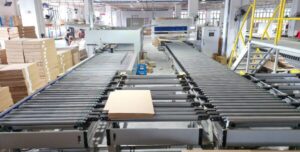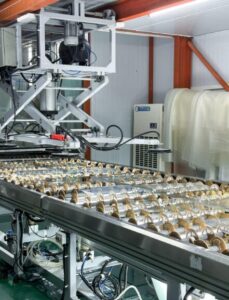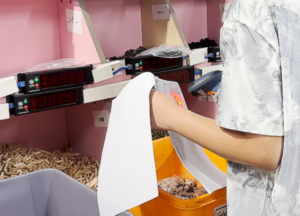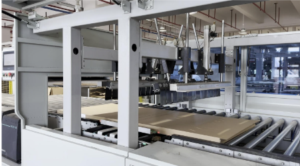Inside the Smart Cabinet Factory: When AI Meets Traditional Manufacturing
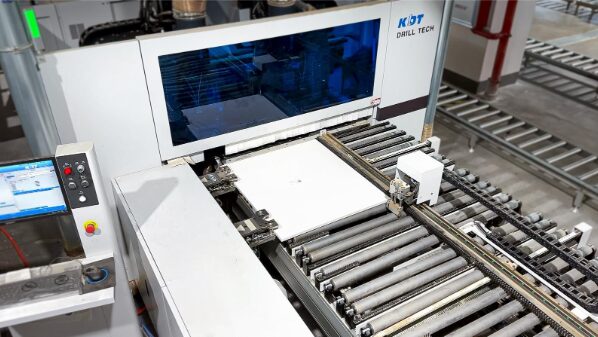
As someone who has been covering the manufacturing industry for several years, I’ve witnessed the sector’s struggle with AI adoption firsthand. The statistics are sobering: while 35% of manufacturing companies have adopted AI technologies, particularly in predictive maintenance and quality control, 42% of companies are expected to abandon their AI initiatives in 2025, up from just 17% in 2024. The gap between AI promises and practical implementation has become increasingly apparent in my reporting.
The furniture manufacturing industry faces these challenges particularly acutely, especially in the kitchen cabinet sector. During my recent visits to various facilities, I’ve seen kitchen cabinet companies struggling to balance traditional craftsmanship with the demands of modern automation. High implementation costs, integration difficulties with legacy systems, and skills gaps continue to plague the cabinet manufacturing sector. Yet occasionally, I encounter kitchen cabinet manufacturers who have successfully navigated this transition.
GUANGDONG, CHINA – When I walked into PA Home‘s manufacturing facility last month, I immediately noticed something different. The familiar sounds of traditional woodworking that I’d heard in dozens of other kitchen cabinet factories had been replaced by the quiet hum of precision machinery and automated systems. This custom kitchen cabinet manufacturer, I would soon learn, represents one of the genuine success stories emerging from the industry’s broader struggle with AI adoption.
Witnessing Real Solutions to Manufacturing Challenges
My tour began with production manager David Zhang, who was refreshingly honest about the practical problems they had set out to solve. “Three years ago, we faced the same issues I’m sure you’ve seen everywhere else,” Zhang told me as we walked through the facility. “Rising labor costs, inconsistent quality, material waste, and long lead times for custom orders. We couldn’t compete on price with mass producers, but we also couldn’t deliver the speed customers expected for custom work.”
What struck me about their approach was how it aligned with what I’ve learned from covering successful AI implementations in kitchen cabinetry: focus on specific operational problems rather than broad technological upgrades. Instead of attempting a complete overhaul that I’ve seen fail at other custom kitchen cabinet companies, PA Home targeted three key areas: cabinet design efficiency, production optimization, and quality control.
I watched as their AI-powered design system analyzed room dimensions, storage requirements, and customer preferences to generate custom kitchen cabinet options within minutes. Senior designer Michael Wong showed me the practical impact: “What used to take our team four to five hours now happens in about twenty minutes,” he explained. “The AI handles all the technical calculations – load requirements, material optimization, standard measurements – so we can focus on what really matters: kitchen cabinet aesthetics and customer preferences.”
Seeing Smart Manufacturing That Actually Works
Walking onto the production floor, I was struck by how seamlessly AI had been integrated into the workflow. Computer-controlled CNC machines cut components with precision I’d rarely seen elsewhere, guided by algorithms that optimize cutting patterns to minimize waste. I observed multiple orders being processed simultaneously, with the system automatically adjusting operations based on material availability and delivery schedules.
“The old approach was completely rigid,” Zhang explained as we watched the automated material handling system in action. “We’d follow set production sequences regardless of efficiency. Now the AI continuously reorders tasks based on machine capacity, material availability, and deadlines. It’s reduced our production time by about 40% while maintaining quality standards.”
I was particularly impressed by the robotic arms equipped with computer vision that moved components between stations with millimeter accuracy. These systems could identify different wood types, detect surface imperfections, and predict potential quality issues before they occurred. “The robots can distinguish between different wood grains and detect small defects that might cause problems later in assembly,” Zhang added, demonstrating the technology for me.
A Quality Control Revolution I Haven’t Seen Elsewhere
Quality control supervisor Janet Liu showed me what she described as the most dramatic change in the facility. As I watched AI-powered vision systems inspect every component multiple times throughout production, I could see how they detected defects that human inspectors might easily miss during busy periods.
“Consistency was our biggest challenge,” Liu explained to me. “Human inspection varies based on fatigue, lighting conditions, and workload. These AI systems maintain the same level of attention throughout the day and can detect very small inconsistencies that we simply couldn’t catch reliably.”
Having covered the broader kitchen cabinet industry trends, I knew that 60% of manufacturers now use AI for quality monitoring, detecting 200% more supply chain disruptions than traditional methods. But seeing it in action at PA Home made the statistics feel real. The AI systems automatically routed imperfect cabinet pieces for refinishing or replacement, ensuring only components that met kitchen cabinet quality standards reached assembly.
Solving the Customization Challenge I’ve Seen Everywhere
During my conversation with operations director Tom Chen, we discussed what I consider the most complex challenge for any custom kitchen cabinet manufacturer: delivering personalized kitchen cabinetry efficiently and affordably. Chen walked me through how their AI manages this complexity through modular cabinet design principles.
“Traditional kitchen cabinet manufacturing achieves efficiency through repetition – making thousands of identical cabinets,” Chen explained as we examined various cabinet components. “Custom kitchen cabinet manufacturing is the opposite – every order is unique, but customers still expect reasonable prices and delivery times.”
I watched as their AI system broke down complex kitchen cabinet designs into standardized components that could be manufactured efficiently and assembled in countless configurations. From full house customization projects to single kitchen renovations, the system tracked hundreds of variables simultaneously, ensuring custom features didn’t conflict with structural requirements and that finishing processes were compatible across different materials.
“The system has learned from thousands of past kitchen cabinet projects,” Chen continued, showing me examples on his computer. “It knows which cabinet combinations work well together, which finishes are compatible with which wood types, and how to sequence everything for efficient kitchen cabinet assembly and installation.”
Measurable Environmental and Cost Benefits
Implementation costs remain a significant barrier for many kitchen cabinet manufacturers I’ve covered, but PA Home’s environmental manager Sarah Park showed me measurable returns on their AI investment. I reviewed their data showing the system continuously optimizes material usage, reducing cabinet manufacturing waste by approximately 25% compared to traditional methods.
“The AI calculates exact amounts of stain, primer, and finishing materials needed for each kitchen cabinet job,” Park explained as she showed me their waste reduction charts. “We’ve virtually eliminated the waste from ordering extra materials ‘just in case.’ This not only reduces costs but significantly improves our environmental impact.”
I also learned how the system manages energy consumption, adjusting lighting, heating, and equipment usage based on production schedules and external conditions. During peak renewable energy periods, the system automatically prioritizes energy-intensive operations.
Future Developments and Honest Assessment of Challenges
Like many kitchen cabinet manufacturers I’ve interviewed who are exploring AI expansion, PA Home continues testing new applications, including augmented reality systems that will allow customers to visualize their custom kitchen cabinets in their actual kitchens before production begins.
CEO Peter Yang was candid about the challenges during our interview. “The technology works, but you have to approach it systematically,” Yang told me. “We started with our biggest pain points in kitchen cabinet production – design time, material waste, and quality consistency – rather than trying to automate everything at once. That’s where I’ve seen other cabinet companies fail.”
I appreciated his honesty about the significant upfront investment and careful planning their success required. Future developments include predictive maintenance systems to prevent equipment failures and supply chain AI to optimize material procurement. “We’re also working on more advanced kitchen cabinet customization options that would have been impossible with traditional cabinetry methods,” Yang added.
The Human Element That Still Matters
Despite the extensive automation I witnessed, skilled craftspeople remained central to the operation. I observed how AI handled repetitive, precision tasks while human expertise focused on problem-solving, innovation, and quality decisions.
“Technology amplifies what our people can do,” Yang explained during our conversation. “The AI handles calculations and repetitive tasks, allowing our team to focus on creativity, problem-solving, and customer service. We haven’t reduced our workforce – we’ve redirected their skills toward higher-value activities.”
Production manager Zhang noted that worker acceptance was initially challenging but improved as employees saw how AI enhanced rather than replaced their cabinet-making capabilities. “Our kitchen cabinet craftspeople are now technology-enabled craftspeople,” he told me. “They have access to better information and tools, which lets them do better cabinet work.”
What This Means for the Industry
After spending a full day at the PA Home facility, I came away convinced that they’ve demonstrated how kitchen cabinet manufacturers can successfully implement AI despite the industry-wide challenges with adoption and scaling that I’ve documented in my reporting. Their approach – starting with specific operational problems in cabinet manufacturing, implementing gradually, and maintaining focus on practical results – offers a roadmap for other custom kitchen cabinet companies considering AI integration.
As I’ve reported on the global AI in manufacturing market’s projected growth from $5.94 billion in 2024 to $230.95 billion by 2034, success stories like PA Home’s provide practical insights into making AI work in traditional kitchen cabinetry environments.
The facility proved to me that the combination of artificial intelligence and human expertise can create kitchen cabinet manufacturing environments that deliver improved quality, customization, and efficiency while maintaining the craftsmanship standards that define quality kitchen cabinetry. For an industry grappling with the challenges of digital transformation, PA Home’s smart factory represents a practical example of AI implementation that enhances rather than replaces human skills in cabinet manufacturing.
As I continue covering kitchen cabinet manufacturers worldwide as they consider their AI strategies for 2025 and beyond, the lessons from this Guangdong facility suggest that success lies not in pursuing the most advanced technology, but in thoughtfully applying AI to solve real operational challenges in kitchen cabinet production while preserving the human elements that create true value.

Source: Inside the Smart Cabinet Factory: When AI Meets Traditional Manufacturing
